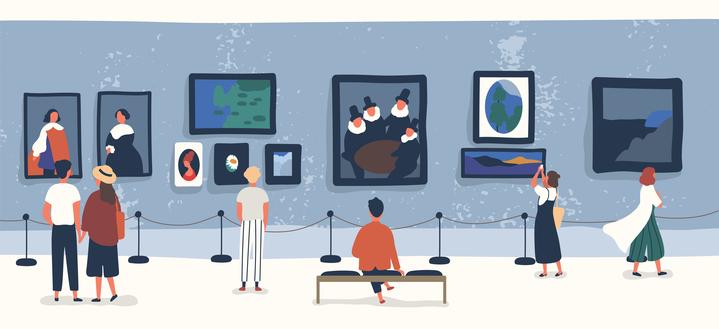
Can we consider a work of as a data? When talking about open data, we usually think of statistical, meteorological, geospatial data... but we do not have in mind a painting, a song or a book. Resources also susceptible to becoming open data.
When we talk about open cultural data we refer to publications, photographs or musical collections created and distributed by institutions belonging to the cultural sector. It is not just the digitalization of the funds, but also enriching them with metadata that provide the maximum possible information (author, date, technique, etc.) and facilitate access in conditions that favour their reuse.
In this sense, libraries seem to have taken the lead in opening information. We have the example of the National Library of Spain, which launched the open data portal datos.bne.es and has launched different projects based on the reuse of its data, such as BNEscolar. Another example is the Miguel de Cervantes Virtual Library Foundation, whose catalogue consists of more than 230,000 records open for reuse.
Museums, meanwhile, are slowly embracing the commitment to open data, although there are an increasing number of institutions that are committed to sharing their collections openly.
Two examples of museums that have opened their collections
On February 7, 2017, the New York Metropolitan Museum implemented a new open data policy. The museum creates, organizes and disseminates a wide range of images and digital data that document the history of the museum and its collection - made up of more than two million works of art, from ancient Greece to European masters such as Rafael, Rembrandt or Velázquez-. With this policy, the images of selected works of art that are in the public domain – and, therefore, with lack of copyright - have been made available to users without restrictions or cost, in accordance with the Creative Commons Zero designation (CC0 ).
The museum's website has a search engine, which shows the different pieces of the collection. The user can separate those that are under the CC0 license, thanks to a filtering tool. In total there are 406,000 high resolution images, accompanied by basic information such as title, artist, date, medium and dimensions.
Another example is the National Museum of Amsterdam or Rijksmuseum, dedicated to the art, crafts and history of this region, which has a large collection of Dutch Golden Age paintings. The Rijksmuseum has an open data space where digital reproductions and associated data are collected. These data are made available to the public free of charge for all types of purposes, also commercial. When the works are free of copyright, it is explicitly indicated in the corresponding descriptive metadata. In these cases, the copyright notice establishes "Public domain", with a reference to the Creative Commons Zero (CC0) license.


Web pages of the Metropolitan Museum of New York and the Rijksmuseum
Why should museums open their collections?
In this interview with the people in charge of the Musée de Bretagne, pioneer in the opening of data among French museums, the interviewees highlight how thanks to the opening of their collection they have achieved greater visibility. The opening of data gives the museum “a positive and innovative image in the French culture sector. It also generates new knowledge about the museum’s collections, thanks to feedback from online visitors”. This museum has a collection of 700,000 pieces, of which more than 200,000 are now visible and reusable online, including free high-resolution public domain images to download and use.
In the same plot line, we can find this study that analyse the impact of the paintings and their metadata included in wikidata and Wikipedia in English. The study shows how the paintings included in Wikipedia are not only used to illustrate content related to art, but also to enrich other types of entries on diverse themes, such as history (for example, the paintings of kings that show us the aspect that they had) or basic concepts (show what a mermaid looks like through a pictorial representation of it). These paintings help complement textual information while attracting users' attention to museum collections, driving a views increase.
A field full of challenges, but also opportunities
Opening the works of the museums entails a series of challenges, such as the need to carry out a legal evaluation to know who are the rights holders and the contracts in force, so that copyright is always respected, or the technical challenges that entails. Museums will need a technological infrastructure, as well as resources to correctly catalogue all the works with their corresponding metadata (you can learn about the Prado Museum's experience in this interview).
But, on the other hand, if these challenges are overcome, the museum will gain multiple benefits, starting with the increase in visibility and the possibilities of its reuse to create valuable products and services.